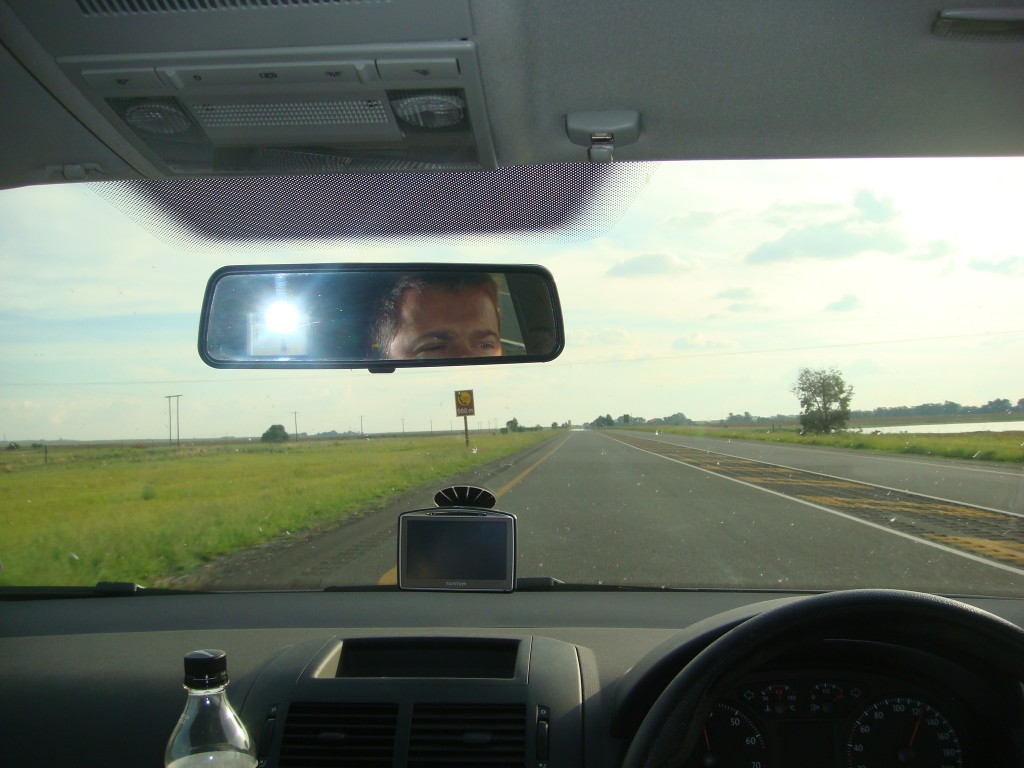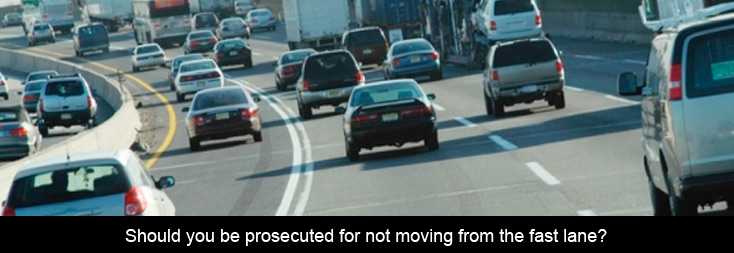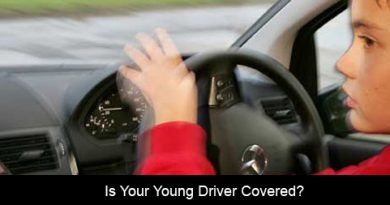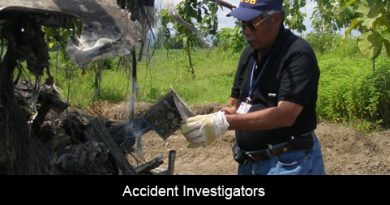Should we prosecute motorists for not moving from the fast lane?
The Arrive Alive Road Safety website received an email from a motorist fined in Cape Town for not moving from the fast lane. This was also featured in the media, and we thought it might be appropriate to share his version of what happened as well as the response to the email from Justice Project South Africa.
Email Received:
Good day
I hope that you are well.
I would like Arrive Alive’s assistance please.
In July I was driving on the N1 towards Cape Town. I was travelling in the far right hand lane as there was a lot of traffic on the road. I was travelling at around 120-130km an hour. A white unmarked vehicle came charging up behind me and tried to force me off the road. He was driving very reckless and tailgated me and tried to get me to move. This vehicle then flashed me to move over and when I didn’t he put on his siren and blue lights and pulled me over.
It turned out to be a Ghost squad traffic officer who then issued me with a R1000 fine for inconsiderate driving.
The City of Cape Town has said that the fine is valid and that they stand behind it and feel he has done nothing wrong.
I have since opened a case of reckless driving against the officer as I feel we cannot allow this type of lawlessness on our road especially from a traffic officer.
I do know the keep left pass right rule but was not able to move and felt why should I move if I am being forced to do so. I want to know if I am travelling on a national road like the N1 in the right hand lane at 120 – 130km an hour am I still obliged to move over or am I within my right to stay in that lane?
I feel the fine is not correct and I found out that this officer did the same thing to someone else also on the N1 last year and also issued him with a fine. So as we can see there is a trend and this officer feels he can get away with it.
I want the fine to be withdrawn and action to be taken against this officer as we need to say no to this sort of thing on the road.
I am an upstanding citizen who obeys the rules of the road. I was wearing my seatbelt, driving within the speed limit and was not breaking any law so the fine is not right at all.
My court date is on the 22nd November 2011
Thank you kindly, look forward to hearing from you.
Steven
 Response from Justice Project South Africa:
Response from Justice Project South Africa:
The article that appeared in the Cape Argus is republished here: http://www.arrivealive.co.za/news.aspx?s=1&i=2799 and has reference in this matter. Whilst I agree that we need to be sending the right message to people, I do not necessarily agree that prosecuting motorists for not moving over from the far right lane on a freeway when they are “flashed” to do so would send the wrong message. This is because our legislation does cater for this and there are many motorists who feel that it is their God-given right to drive as they wish on our roads with scant regard for others.
Firstly, I openly acknowledge that South Africa has speed limits and that speed limits must be strictly adhered to by all motorists. If they do not do so then there must be prosecuted. I do however once again point out that my standpoint on this matter is that speed limits should be physically enforced and motorists who exceed them should be stopped at the time and issued with the relevant infringement notice, since cameras serve little other purpose than being tantamount to wholesale weapons of mass prosecution and revenue generation.
I am of the firm conviction that camera-based speed enforcement has contributed greatly to the almost total lack of adherence to speed limits and almost every other provision of the “rules of the road” in South Africa, due to people simply getting to pay fines and in the process, make enforcement authorities and private companies alike lazy and stinking rich.
Many people seem to have forgotten, or indeed never grasped that the general golden rule of driving on South African roads is “keep left – pass right”. Why this has happened is completely beyond me except for the foregoing, but perhaps it has something to do with the fact that people are also (incorrectly) assuming that the 10km/h “tolerance” that has been catered for in speed trapping exercises means that they can indeed drive at 10km/h above the speed limit. It is this belief that causes so many motorists to incur piles upon piles of speeding fines, due to the fact that they have failed to take into account that speedometers in motor vehicles are very rarely bang on accurate.
Since this particular incident occurred on a freeway, I am going to stick to the subject but I do just briefly wish to point out that the rules applicable to freeways and those applicable to multi-lane roads and dual carriageways are distinctly different and there is no such thing as a “fast lane” on a freeway. On other roads these lanes are generally in place for directional purposes and are not speed dependent.
 The far right lane on a freeway:
The far right lane on a freeway:
The purpose of the outer lane on a freeway is to allow faster moving traffic to overtake slower moving traffic which should in fact be in one of the other lanes of that freeway. People like to call the outer lane the “fast lane”, which is not in fact the correct terminology for it. Under normal circumstances, traffic travelling on a freeway should make use of the other lanes on the freeway until such time as they wish to pass a slower moving vehicle and once they have done so, they should move back into the lane immediately adjacent to the lane they use to overtake. The only exception to this rule comes in when there is dense traffic, in which case the outer lane gets used to carry the greater volume of traffic.
The other interesting anomaly is that whilst one is legally allowed to overtake another vehicle on the left on a freeway, one should not strictly be doing so and wouldn’t have to if our road users were educated enough to understand that the lanes on freeways are in fact designed to have gradient speeds of traffic. By this I mean that; say if a freeway has four lanes, the most inner (or far left) lane should be used by the slowest moving vehicles and those which are about to exit the freeway. The outermost (or far right) lane should be used solely for overtaking and the lanes in-between should be used by vehicles travelling at speeds faster than in the inner lane and slower than the outer lane. At least that is how it is supposed to work in the ideal conditions; and it is how it does work in other countries like Germany for example, albeit that they drive on the right hand side of the road.
Now, whilst I despise speedsters and I can say without much for fear of contradiction that the majority of people who speed on our freeways are not necessarily doing so because they are responding to an emergency, let’s just take the following into account. Although the law does not say that you may speed due to a family emergency, etc. the application of the law is mostly different to how it is written because it is applied by human beings.
Most human beings, on the hearing that there is a personal emergency of some kind, will jump in their vehicles and race off as quickly as they can to get to the perceived emergency. Similarly if one has an injured person in one’s vehicle, a tendency is to drive much faster than one normally would. Whilst this is certainly not the correct behaviour to adopt, we live in a world populated by human beings and human beings have emotions which often control their actions.
When one encounters a person on a freeway that is coming up fast behind you and flashing their lights for you to move over, you cannot be aware of circumstances prevailing for the other person at that time are; and therefore by hogging the outer lane when it is possible and safe to move over into the adjacent lane is both inconsiderate and arrogant.
Additionally any person who thinks that they have the right to act as a traffic cop towards other motorists is in fact engaging in a very dangerous practice. It is not the responsibility of motorists to police other motorists by obstructing them and it is always a better tactic to get out of the way of a speeding motorist, rather than try and slow them down. Many road rage incidents arise out of people assuming that they do indeed have the right to obstruct delinquent motorists and this should be avoided at all costs. You always have the right to report them to the RTMC traffic call centre on 0861 400 800 or to your local authority if you feel that they are driving dangerously.
But imagine if you would that you had a child in your vehicle that had just been bitten by a venomous snake and you were rushing them to a hospital for anti-venom to be administered and then you encountered somebody, who like you, thinks that it is their job to obstruct other motorists who they perceive are speeding. Ask yourself what you really think that you would do. I can hear the counter-argument now, so please don’t bother telling me “call an ambulance” as that is not always practical.
We also need to take into account the fact that there are such things as the “blue light brigade” of the VIP protection units and that these people are very rarely stick to the speed limit or any other rules of the road, mainly because they have been incorrectly trained to believe that they are both, invincible and above the law. Of course, they do have blue flashing lights, which all motorists should immediately give right of way to, regardless of whether they think they are lawless or not. Not giving right of way to them is tantamount to suicide, because those idiots pull out guns and start shooting at people who don’t get out of their way! They are far from right, but motorists who deliberately obstruct them are equally not in the right.
What the law says:
Regulation 323(5) and (6) of the National Road Traffic Regulations 2000 apply to this particular matter insofar as they say:
“(5) Where the driver of a motor vehicle which is being driven in the right-hand traffic lane or in the traffic lane furthest to the right on a freeway (hereinafter referred to as the first vehicle) becomes aware that the driver of another motor vehicle (hereinafter referred to as the second vehicle) intends to overtake the first vehicle, the driver of the first vehicle shall steer that vehicle to a lane to the left of the one in which he or she is driving, without endangering himself or herself or other traffic or property on the freeway, and shall not accelerate the speed of his or her vehicle until the second vehicle has passed.
(6) For the purposes of subregulation (5) the driver of the second vehicle may make the driver of the first vehicle aware that he or she intends to overtake the first vehicle by giving the driver thereof a visible signal by means of flashing the headlights of his or her vehicle.”
This is why I was particularly surprised when the article in question said: “the mayoral committee member for safety and security, JP Smith, said he too had been unaware of the rules about driving in the fast lane.” I thought that he was an ex-traffic cop and he should have been acutely aware of this provision and should also know that there is no such thing as the “fast lane” on a freeway.
But it must also be borne in mind that a good, defensive driver would move into the other lane well before coming up to a slower moving vehicle in the lane he or she was travelling in and if the driver is travelling at or close to the speed limit in the outer lane, then any other motorist travelling at a greater speed should slow down in order to allow them to complete the manoeuvre safely. I have often encountered arrogant speedsters who do not grasp this concept and will come speeding up my rear and flash me, or speed past me in the left lane and then abruptly cut back into the outer lane in front of me, just before they hit the slower moving vehicle in the lane to the left. This does not happen on rare occasions, it happens on an almost daily basis and many of these drivers also then slam on brakes in front of me to “teach me a lesson”. They are damn dangerous and should be nailed by traffic cops!
And before anyone asks why it is that I would have moved into the outer lane if a faster moving vehicle was approaching, let me just say that these vehicles are often weaving in and out of traffic and/or are a long way behind me when I do so.
The National Road Traffic Regulations have been around for 11 years now and just because some sections have not been enforced properly in the past does not mean that they should not be.
The problem with enforcing this particular provision properly comes in where traffic officers purposefully exceed the speed limit in order to enforce it, or goad motorists into wrongdoings by their actions which get perceived as intimidatory behaviour. The speed limit on a national freeway is 120km/h and the second that one exceeds that speed, one is in actual fact infringing on the law. Even though a tolerance of 10km/h is applied in South Africa to cater for inaccurate speedometers and momentary lapses in concentration with respect to speed, the fact is that a speed greater than the speed limit is actually an infringement.
In this particular case, Mr Steven Taylor has stated that he was driving at 130km/h. It is then stated that the traffic officer flashed his lights at him and he refused to move over to allow him to proceed. There are now a number of factors that come into this scenario and these are:
- Was Mr Taylor’s speedometer accurate and was the same speed showing on the traffic officer’s speedometer?
- What gave Mr Taylor the impression that he is allowed to drive at 130km/h?
- Was the same speed showing on the speedometer of the traffic officer’s vehicle?
- If it was, then why did the traffic officer think that he too could exceed the speed limit?
- Did the ghost squad car have a Moving Violations Recorder, linked to an approved speed measurement device installed in it?
- If it did, then why did the traffic officer decide to flash Taylor instead of citing him for speeding?
Since Mr Taylor was not prosecuted for speeding, it is safe to assume that no such equipment was in the ghost squad vehicle or one can be almost certain that the traffic officer would simply have waited for him to hit 131km/h and pulled him over for speeding since no-one can drive at an exact speed for any length of time. I for example have three means of checking my speed – my speedometer (which is far from accurate), my GPS navigation unit and a Moving Violations Recorder attached to a radar Speed Measurement device. I have the latter because I am currently busy with research on moving violations and I can assure you, it is almost constantly recording multiple moving violations of all descriptions.
If Mr Taylor was driving at or below the speed limit, he should indeed have moved over to allow the traffic officer’s vehicle to pass but instead he chose to act as traffic cop himself because he thought he was exceeding the speed limit. This is such a contradiction in terms that it is just not funny! What on earth made Mr Taylor think that he was allowed to exceed the speed limit and then prevent other motorists from doing likewise is completely nonsensical.
But another problem arises in that most, if not all traffic officers and police are under the blissful illusion that they are allowed to disregard traffic laws in the normal execution of their duties and that is simply not true. The National Road Traffic Act gives emergency and law enforcement personnel the right to disregard certain provisions of the law in the execution of their duties, but it does not give them blanket permission to break whatever laws they wish to break when they feel like doing so.
When it comes to speeding, in the case of law enforcement officers, the allowance to do so is clearly defined in the standing orders of the law enforcement authorities they work for, which all say more or less the same thing. Specifically, they are only allowed to exceed the speed limit in two sets of circumstances:
- When they are in pursuit of another vehicle, or
- When they are responding to an emergency.
At all other times they must abide by the legislation and there is no blanket permission to break these laws granted or implied. Section 58(3) of the National Road Traffic Act says that a traffic officer (and various other emergency personnel) may disregard a road traffic sign in the execution of their duties “provided that he or she shall drive the vehicle concerned with due regard to the safety of other traffic.”
Somewhere along the line, this has been translated to mean that “traffic laws do not apply to law enforcers” and this is absolute nonsense!
It is my standpoint that traffic officers should indeed enforce this provision of the law on freeways but they must also be certain that:
- When enforcing it, they do not speed in order to do so. If a motorist is speeding, then they should be pulled over and be charged for speeding, but only if the relevant approved equipment is installed in that traffic officer’s vehicle.
- The traffic officer must be 100% certain that it is safe for the motorist to make way for them by moving over into the adjacent lane. Often, it is not safe to do so without cutting in front of other fast moving vehicles or otherwise presenting a danger to other motorists and that must be taken into account.
- These violations should be recorded on video recording equipment like Moving Violations Recorders that constantly record so as to establish the facts of the offence clearly for evidential purposes and prevent traffic officers from engaging in goading tactics.
- Minimum speed limits on freeways, where they exist must also be actively enforced as there are often a number of very slow moving vehicles on many freeways which pose a grave danger to other motorists travelling at higher speeds. In most cases these minimums are, in my opinion way too slow (40 or 50km/h) as they stand and anyone driving below those speeds should not be on that freeway. But it must also be remembered that minimum speed limits are not always (in fact, rarely) posted on freeways and there is no provision in the law that says that vehicles travelling on freeways must do so above a certain speed.
I will actively support traffic officers fining people for hogging the far right lane of a freeway, but if they break the law in order to do so, then I will be at the head of the pack shouting for them to be prohibited from and be brought to book for doing so.
Messages we send
With respect to sending messages, I think that we do indeed need to send the right message and if people are too arrogant to grasp the simple concept of “keep left – pass right” then they should be prosecuted. South African drivers seem to labour under a huge assumption of entitlement on our roads and this is one of the greatest factors that contributes to the unacceptably high level of road deaths that occur on our roads.
Similarly, many law enforcers have over the years become very arrogant and subscribed to their own set of entitlement beliefs and this matter must be urgently addressed. We simply cannot continue to tolerate law enforcement officers who break the law in order to enforce it and goading people into committing offences – by tailgating them, etc. is despicable and completely unnecessary. Any competent traffic officer will realise that this type of behaviour is never necessary as it is not in the least bit difficult to find people committing moving violations with little effort.
From my own observations and research I can say without fear of contradiction that there are very few motorists on our roads these days who do not commit multiple moving violations – including driving in the outer lane of freeways at speeds well below the speed limit – on a daily basis. The message that needs to be sent is that moving violations of all types will not be tolerated and if one is unaware of what the law is, then people have no right to say “I am a law-abiding citizen” as is so often said by most people I encounter.
Sticking to the “rules of the road” is not difficult if you know what they are and everyone who drives on our roads has a moral responsibility to constantly ensure that they are aware of them. A driving licence is not a licence to drive as one wishes, it is supposed to be a confirmation of the fact that the person who holds it has grasped all of the concepts that surround sharing roads with others.
Best Regards,
Howard Dembovsky
National Chairman – Justice Project South Africa (NPC)





